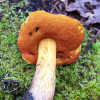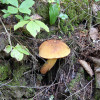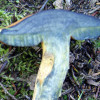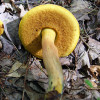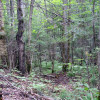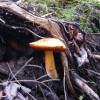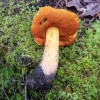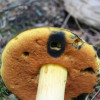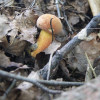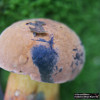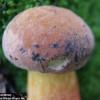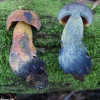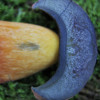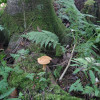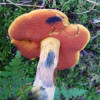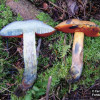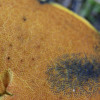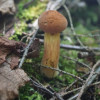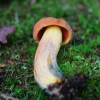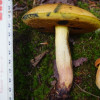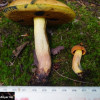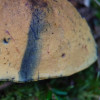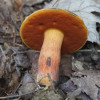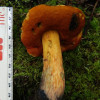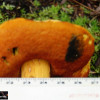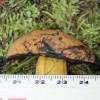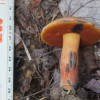Identifying Your Bolete
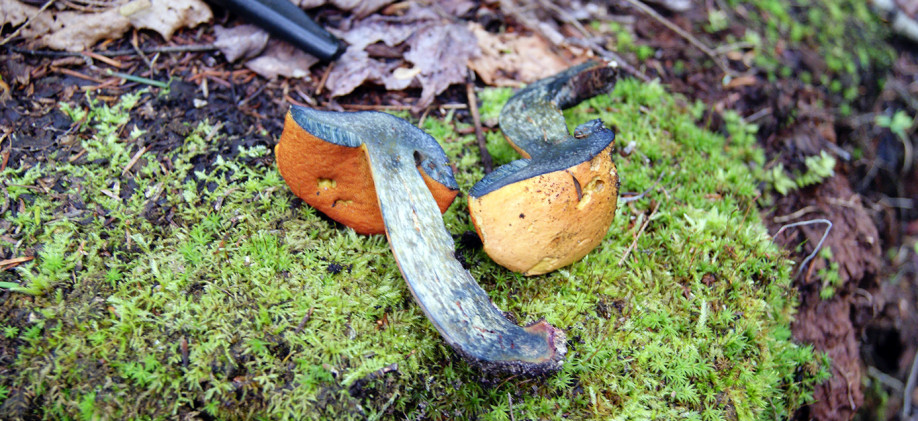
Habitat Area
Under broadleaf hardwood trees. Boletus vermiculosus is said to be very rare, growing under oaks and beeches. However, we found it frequently in Basse-Mauricie, Quebec, in a mixed forest dominate by conifers.
Pores and Pore Surface
Mainly red-brown, staining blue when bruised. For Boletus vermiculosus, pore surface is typically brown when young, decoming reddish brown to brownish orange in age. For Boletus vermiculosoides, the pore surface is dark brown when young and paler in age. Pores circular, 2-3 per mm.
Stalk
Nearly equal or enlarging downward, non-reticulate, pale yellow toward the top, orange or reddish at the bottom.
Flesh
Total, rapid colour change to blue. In the stipe, sometimes tints of yellow or brown in the stipe. the flesh invaded by insects larvae take a reddish color.
Chemical reactions
FLESH: towards orange beige with KOH, NaOH; towards gray with FeSO4, towards beige then dark gray with NH4OH; to black with phenol; little reaction with formalin.
CAP: towards brown with KOH, NaOH andmNH4OH; to gray or black with FeSO4, phenol and formalin.
TUBES: everything turns blackish and the center of the phenol turns white.
Comments
Send a comment
A first fructification for Boletus vermiculosus, in Shawinigan, Qc. on june twenty 2017. F. Miron, biologist
For more informations


































